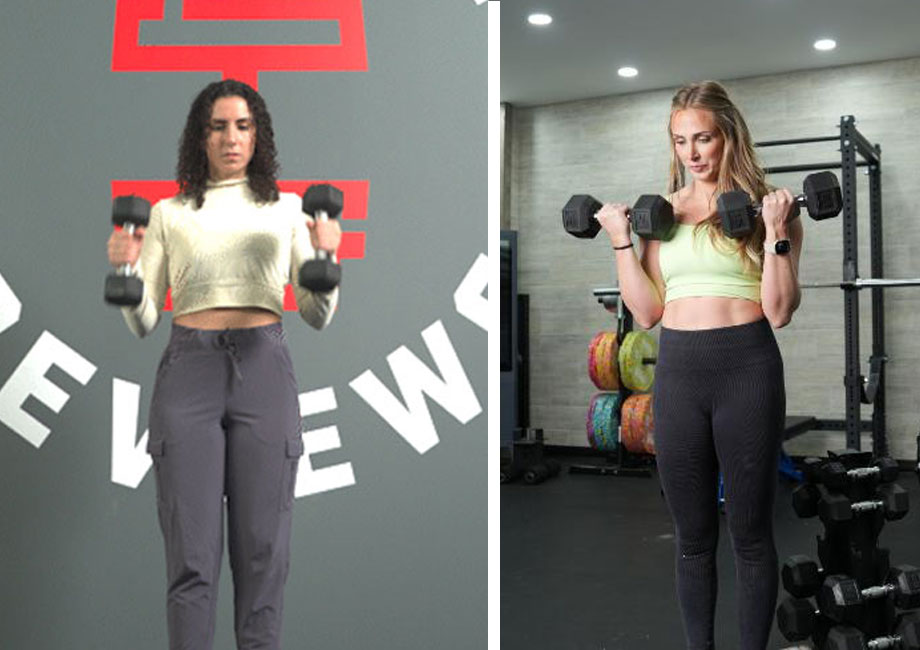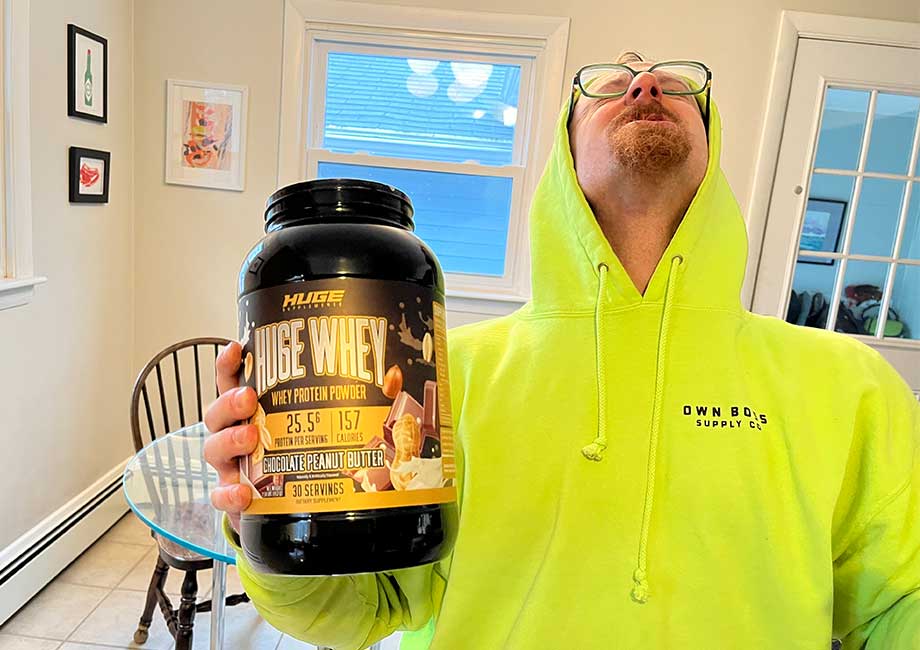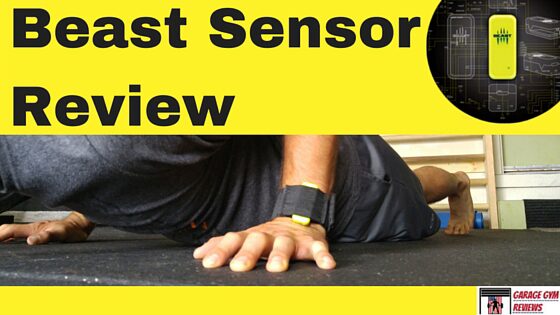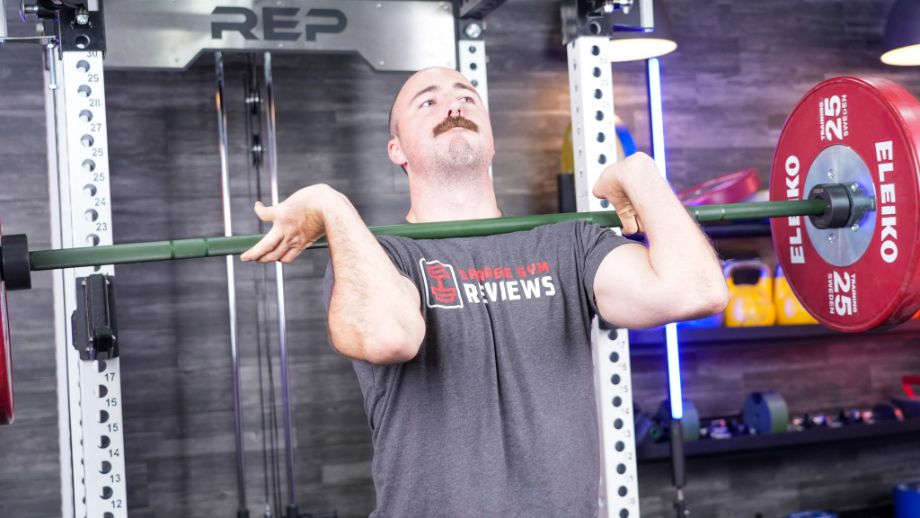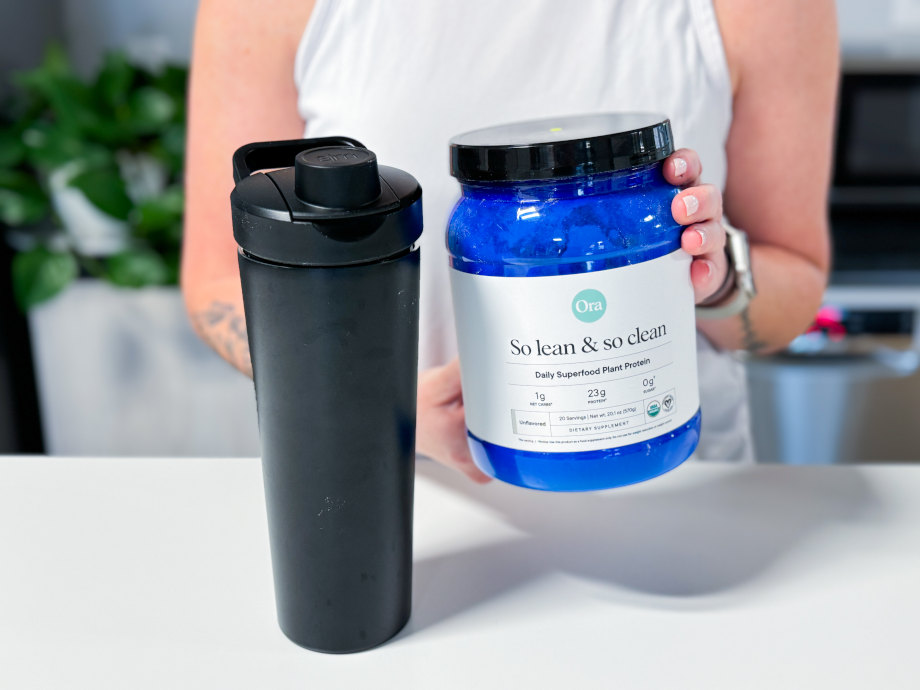Lifters want to know, when it comes to the hammer curl vs biceps curl, which curl reigns supreme? Are they equally effective at helping build muscle and strength, or should one take precedence in the name of bigger biceps?
Caine Wilkes, OLY, USAW-L1, and GGR senior staff writer, has the answers you’re looking for. Read on as we discuss how to do these biceps exercises, the merits of each, and which may best suit your fitness goals.
RELATED: Best Biceps Workout
Quick Look: Hammer Curl vs Biceps Curl
The biceps receive some ancillary muscle activation from various compound exercises, but one leading biceps exercise provides total isolation: the curl. Of course, there are a certified boatload of biceps curl variations, but virtually all involve contracting the biceps muscles through elbow flexion.
The standard, no-frills dumbbell biceps curl and the ever-popular hammer curl are no exception. They require the lifter to move a free weight (or use resistance when using a cable machine) to complete the range of motion.
The main difference between the two movements is your grip.
Muscles Worked
The regular biceps curl and hammer curl work muscle groups in your upper arms1, including the short head and long head of the biceps brachii, the brachialis, and forearm muscles, like the brachioradialis muscles. The anterior deltoid of the shoulder also receives some activation.
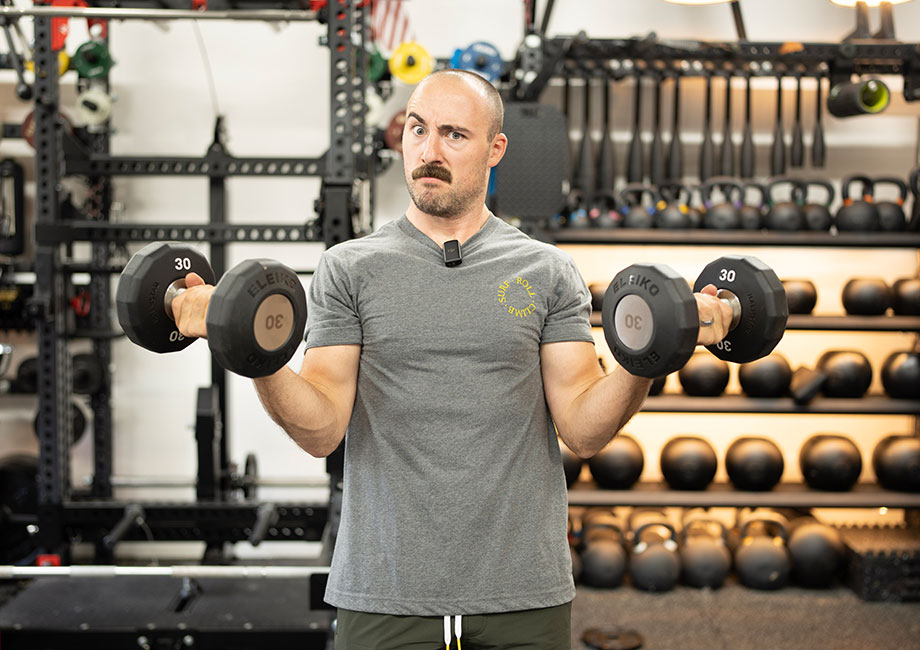
RELATED: 7 Long Head Biceps Exercises
You can increase which region receives the most activation by changing up your grip: underhand, overhand, or neutral.
Key Similarities Between Hammer Curls and Biceps Curls
Biceps curls and hammer curls are nearly indistinguishable to the untrained eye. Here are a few of the most notable similarities between these two tried-and-true biceps exercises.
Movement Pattern
“The biceps curl exercise and hammer curl are nearly identical in terms of biomechanics,” says Caine Wilkes, OLY, USAW-L1. “Both exercises involve lifting a barbell, a pair of dumbbells, or another type of free weight by flexing the elbow joint.”
RELATED: Best Dumbbells
Regardless of which variation you choose, you’ll be holding a weight or cable machine handle at approximately waist height in the starting position, then curling it towards your shoulder using your biceps as you move through the range of motion.
No matter which variation you’re using, make sure that you keep your elbows stationary. The movement should derive solely from flexing the elbow joint and contracting the biceps muscle, as letting the arm move otherwise cheats the movement and diminishes your gains.
Muscle Activation
Because your biceps are the primary movers in both variations, both the biceps curl and hammer curl make great isolation exercises for your biceps brachii muscle, although arm muscles like the deep brachialis muscle and brachioradialis of the forearm will also receive a little activation.
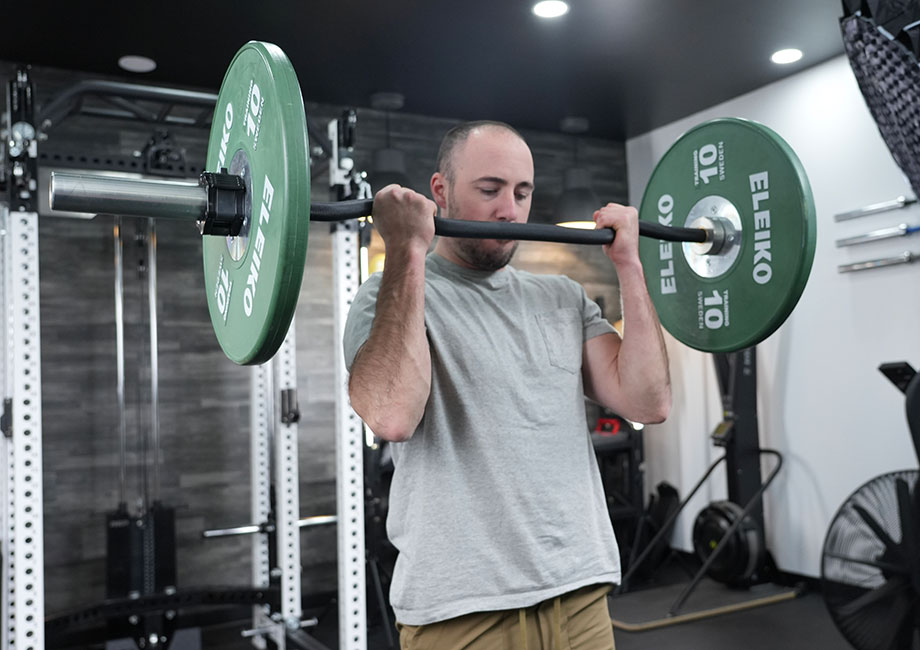
“There are a lot of exercises that hit the biceps to some degree, including pull-ups, chin-ups, seated cable rows, etc.,” explains Caine, “but only the biceps curl and other biceps curl variations completely isolate the biceps brachii muscle groups.”
You can even go one further by performing these exercises unilaterally (one arm at a time) to help fix muscular imbalances and build stronger biceps.
Programming Purpose
Since the exercises are, in many ways, interchangeable, many personal trainers and strength coaches will program them into their arm workout routines with the same purpose in mind, and that’s usually for building biceps size, strength, endurance, or all of the above.
RELATED: Best Arm Exercises
It doesn’t matter if you’re a powerlifter, bodybuilder, or an athlete who uses weightlifting as part of their strength training regimen; the biceps curl and hammer curl are both crucial components for strength gains and muscle growth in the biceps.
Additionally, both exercises are good for building grip strength, which can be helpful for other weightlifting movements and everyday life.
Important Differences Between Hammer Curls and Biceps Curls
So, the hammer curl and biceps curl are basically the same exercise, right? Not exactly.
Type of Grip
The main difference between these two biceps exercises is the type of grip used.
For the biceps curl, you’re using an underhand (or supinated grip), meaning your palms are facing away from your body in the starting position and facing you in the top position. Because of this, you can use a barbell, a pair of dumbbells, or even a set of the best kettlebells to do your curls.
On the other hand, hammer curls employ a neutral grip, meaning your palms face each other throughout the whole range of motion. So barbell curls using a straight bar are out, but dumbbells still work just fine.
“You can use a kettlebell for hammer curls, too,” says Caine. “Grab a heavy kettlebell by the handle using two hands and curl away. Don’t forget to squeeze those biceps at the top!”
Starting Position Tension
“The starting position of the traditional palms-up biceps curl features a nearly fully-extended elbow, meaning your biceps muscles are still slightly contracted even in the bottom position,” says Caine. “The hammer curl, on the other hand, uses a neutral grip that puts less stress on the elbow joint, meaning the starting position should feel easier.”
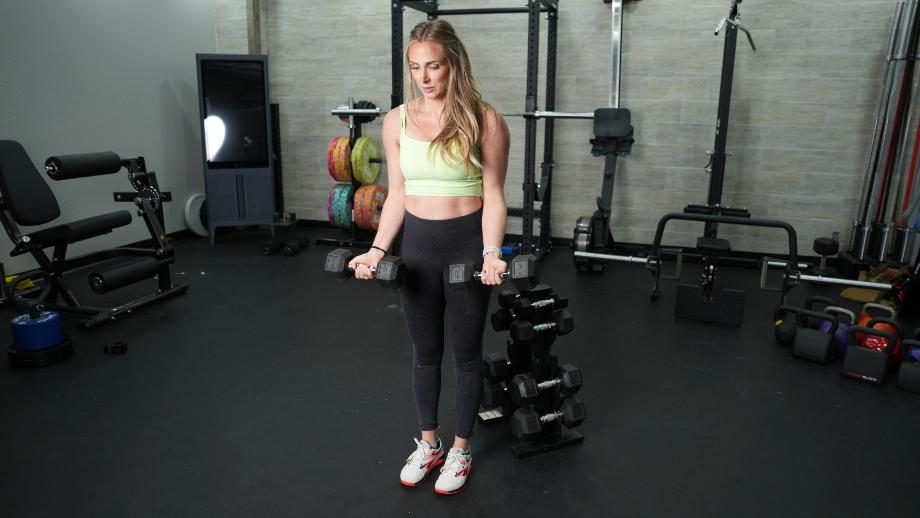
RELATED: Best Biceps Stretches
Muscle Emphasis
Generally speaking, the biceps curl and hammer curl target and isolate the same muscles, but that’s only touching the surface.
According to Sports (Basel)2, the biceps curl, because of the supinated grip, produces greater EMG activity in the biceps brachii, specifically the short head and brachioradialis, compared to pronated or neutral grip variations. Likewise, the long head of the biceps, deep brachialis muscle, and anterior deltoid showed higher activity while using a pronated or neutral grip, as is present during the hammer curl.
Researchers recommended that “practitioners should consider including different hand grips in the biceps curl routine to vary the neural and mechanical stimuli.” So, while the exercises don’t technically work different muscles, you may choose one over the other depending on what area you’re looking to emphasize during your training.
How To Do Hammer Curls
Why do it: For bigger arms, hammer curls are a must, as they can target your outer arm muscles and forearms for greater hypertrophy and that aesthetically-pleasing bulky arm look.
How to do it:
- Stand with your feet shoulder-width apart, chest tall, core tight, shoulders down and back, eyes forward, and two dumbbells held at waist height using a neutral grip.
- Breathe in, then exhale as you curl the dumbbells toward your shoulders.
- Continue until your elbows are fully flexed, then squeeze your biceps.
- Slowly guide the weights back to the starting position.
- Repeat as needed for reps.
RELATED: How To Do Hammer Curls
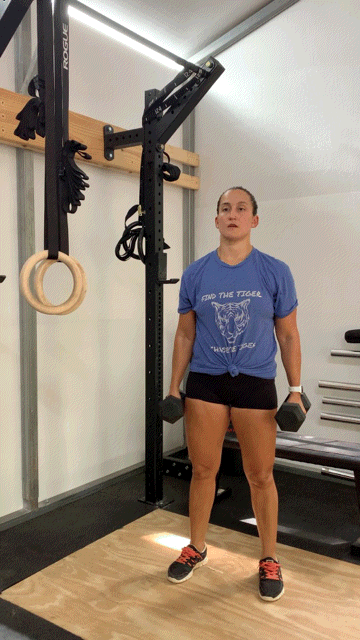
Benefits of Hammer Curls
Hammer curls offer the same garden variety gains as biceps curls when performed with proper form, but they also offer several unique benefits:
- Potential to lift heavier: Most people are capable of moving heavier weights when doing hammer curls vs biceps curls.
- Targets more muscle groups: While biceps curls provide pure isolation to your biceps brachii, the hammer curl has more of an impact on the brachialis and anterior deltoid muscles.
- Gentler on the elbow joint: Most people find the hammer curl to be gentler on their elbow joint due to the differences in the starting position of the exercise.
How To Do Biceps Curls
Why do it: The traditional biceps curl is a classic for a reason. It’s accessible to beginners and seasoned lifters alike, and it’s one of the best exercises for targeting the muscles to build big biceps.
How to do it:
- Stand with your feet shoulder-width apart, chest tall, core tight, shoulders down and back, eyes forward, and a barbell held at waist height using an underhand grip. You may also use a pair of dumbbells, a resistance band, or a cable machine.
- Inhale, then exhale as you curl the weight toward your shoulders.
- Continue until the elbows are fully flexed.
- Squeeze your biceps in the peak position.
- Slowly guide the weight back to the bottom.
- Repeat as needed for reps.
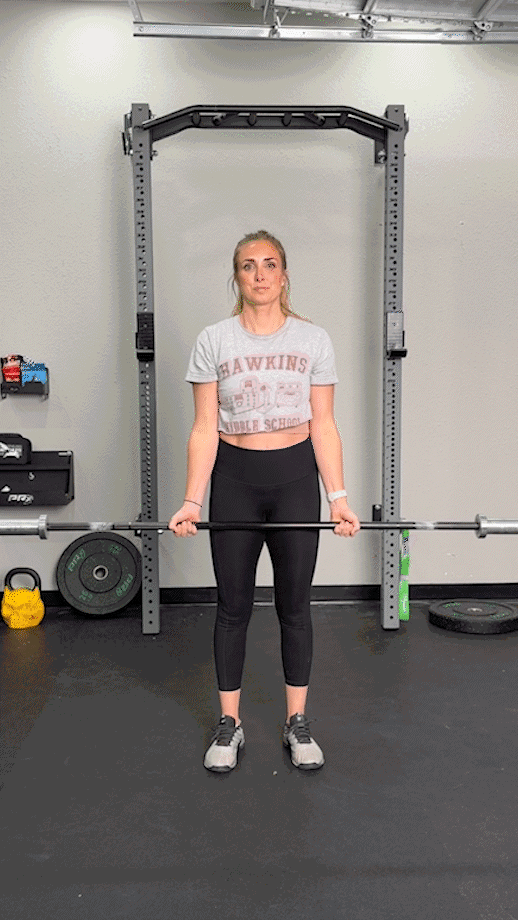
Benefits of Biceps Curls
So, what does the basic biceps curl offer that the hammer curl cannot?
- Better isolation of biceps brachii: For perfectly sculpted peaks, you will most definitely want to make use of the biceps curl and curl variations using a supinated grip.
- Better translation to other activities: Doing biceps curls with an underhand grip translates better to other pulling activities, making it more useful beyond biceps building.
- Compatible with more equipment: Because you need a neutral grip, the hammer curl can only be performed with a few pieces of equipment, while the biceps curl can be done using a barbell, dumbbells, kettlebells, resistance bands, EZ bars, and cable machines.
RELATED: Best Curl Bars
Hammer Curls vs Biceps Curls: Which Should You Do?
You could rotate between hammer curls and biceps curls arbitrarily and get reasonable results, but that’s not really the smartest way to settle the battle of Hammer Curls vs. Biceps Curls.
Rather, you should prioritize one variation over the other, depending on your personal goals.
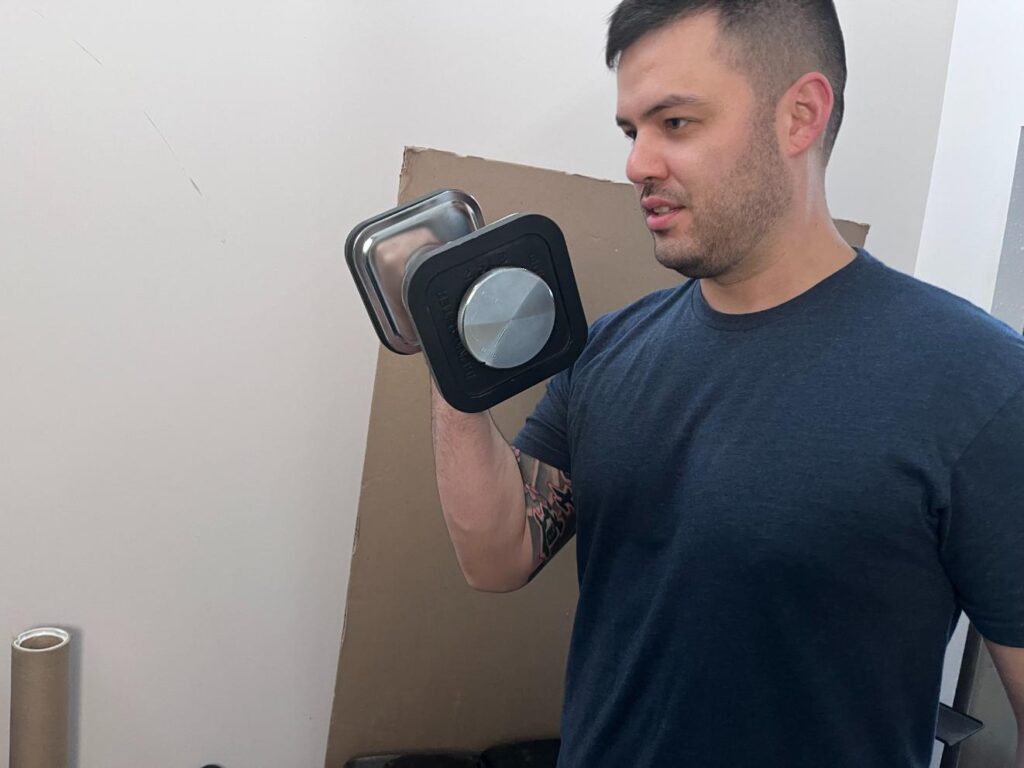
Use the hammer curl if you:
- Want thicker arms: The hammer curl hits the long head of the biceps and brachialis muscle with more intensity, so primarily doing them may result in a girthier appearance.
- Bigger forearms: Hammer curls really hammer the forearms too, so they’re perfect for that “Popeye” look.
- When you’re going heavy: Most people can lift heavier on hammer curls than regular biceps curls. If you’re looking to max out, the hammer curl may be your best option.
So, when should you use regular biceps curls instead?
- You want rounder biceps: Standard biceps curls hit the short head of the biceps brachii, which helps give biceps that classic rounded appearance.
- You’re working on pull-ups/chin-ups: Hammer curls help with this goal too, but the regular biceps curl starting position may translate better since it uses a similar grip
- You want more versatility: The hammer curl can be tweaked, but there are seemingly endless variations of the regular curl, including the concentration curl, cable curl, preacher curl, reverse curl, spider curl, Zottman curl—the list goes on…
For personalized programming, consider working with a certified personal trainer or other qualified fitness professional. They will know when to program the hammer curl, biceps curl, or even both in the same workout to really double your gains.
RELATED: Best Online Personal Trainer
Hammer Curls vs Biceps Curls: Final Thoughts
Hammer curls, biceps curls, and other curl variations offer a tried-and-true avenue for building bigger upper arms and greater overall upper body strength, but there are scenarios where you may consider using one over the other.
For the best biceps results, we recommend using both in your strength training to keep the stimulus dynamic and the gains a-coming!
Hammer Curls vs Biceps Curls: FAQs
Are hammer curls better than biceps curls?
The hammer curl and biceps curl are so similar that it’s a super tough call to say which one is “better,” per se. Generally speaking, they are comparable, but one may be better, depending on your training goals.
For the best results, work both into your routine.
Should I do hammer curls or biceps curls first?
“Why pick one over the other when you can superset both?” says Caine Wilkes, OLY, USAW-L1, and GGR senior staff writer. “Because the hammer curl is generally easier for most people and recruits more muscle groups in the arm, it’s best to start with biceps curls, complete all your repetitions or rep until you reach muscle failure, then switch it up and do hammer curls to cash out.”
Which biceps curl is the most effective?
The American Council on Exercise3 compared the EMG activity of various biceps exercises to determine which is the best for this muscle group. They found that the concentration curl reigned supreme for biceps brachii activation, with the title of second place shared by the cable curl and the chin-up.
RELATED: Cable Biceps Workout
References
1. Tiwana MS, Charlick M, Varacallo M. Anatomy, Shoulder and Upper Limb, Biceps Muscle. [Updated 2024 Jan 30]. In: StatPearls [Internet]. Treasure Island (FL): StatPearls Publishing; 2024 Jan
2. Coratella G, Tornatore G, Longo S, et al. Biceps Brachii and Brachioradialis Excitation in Biceps Curl Exercise: Different Handgrips, Different Synergy. Sports (Basel). 2023;11(3):64. Published 2023 Mar 9. doi:10.3390/sports11030064
3. Young, M.S., S., Porcari, Ph.D., J. P., Camic, Ph.D., C., Kovacs, Ph.D., A.; Foster, Ph.D., C. Ace Study Reveals Best Biceps Exercises. ACE. ProSource™: August 2014


